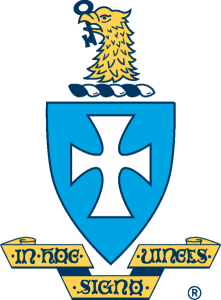The Early Years
“We entered upon all our college duties with great zeal and earnestness, studied hard, tried to excel in every department of study, contended for every hall or college prize and endeavored to make our Fraternity have a high and honorable standing.”
~Issac M. Jordan, Founder
The Framework of a Fraternity
One of the best moves the first six Founders ever made was to associate themselves with William Lewis Lockwood. He had entered Miami early in 1855 but had not joined a fraternity. He was the “businessman” of the group and possessed a remarkable organizing ability. More than any other Founder, he was responsible for setting up the general plan of the Fraternity, much of which endures to this day.
During the latter months of the 1854-55 academic year, Runkle and Caldwell lived in a second-floor room of a building near Oxford’s public square on High Street-now known as the birthplace of Sigma Chi. The Founders held many of the earlier organizational meetings of Sigma Chi in this room, and it was there that Runkle and Lockwood designed the badge. The White Cross was designed exactly as we know it today except for the letters Sigma Phi in the black center which were changed to Sigma Chi.
Having been members of Delta Kappa Epsilon, six of the Founders were familiar with the general outline of fraternity constitution and ritual content. They were considerably influenced by Lockwood, who had known little of Delta Kappa Epsilon or its differences. With all of their plans formally completed, the seven Founders of the new Fraternity announced its establishment by wearing their badges for the first time in public on Commencement Day at Miami University, June 28, 1855.
Built to Last
The working fraternal conceptions of Sigma Chi Fraternity have long been identified with the words friendship, justice and learning. These three elements were the basic ideals our Founders used in forming the foundation of Sigma Chi.
In their new fraternity, they held the qualities of congenial tastes, quality fellowship and genuine friendship to be indispensable. The element of thorough fellowship was regarded as a characteristic of all real fraternity endeavors, thus they sought true friendship.
In matters of general college interest, the Founders had refused to be limited simply by the ties of their DKE brotherhood. The Founders’ new association was surely not planned to prevent laudable mutual helpfulness. On the contrary it was designed in every worthy way to enhance such helpfulness. The new fraternity stood for the “square deal” in all campus relations. It exalted justice.
Rigorous Academics
In the 19th century, the academics of college were very strenuous. College men of the day studied subjects such as spherical trigonometry; Roman history; odes and satires of Homer, Horace and Plato. A strong emphasis was placed on literature in all campus activities. In the literary exercises of the chapter, literary training was regular and rigid. Founder Issac M. Jordan once said, “We entered upon all our college duties with great zeal and earnestness, studied hard, tried to excel in every department of study, contended for every hall or college prize and endeavored to make our Fraternity have a high and honorable standing.” The founders placed learning in high regard and importance.
The Spirit of Sigma Chi
The Founders’ unfortunate experience in Delta Kappa Epsilon, which they saw as a group focused on conformity for political gain, stirred their hearts and their spirit. They found it a necessity to allow and accept differences in points of views and opinions, realizing that doing so brought opportunities and pleasures. This “spirit” became documented as The Spirit of Sigma Chi. Though The Spirit calls for men who are inherently “different,” it is expected that the members, in their differences, remain responsible, honorable, gentlemanly, friendly-indeed all those characteristics that are also listed in The Jordan Standard.

